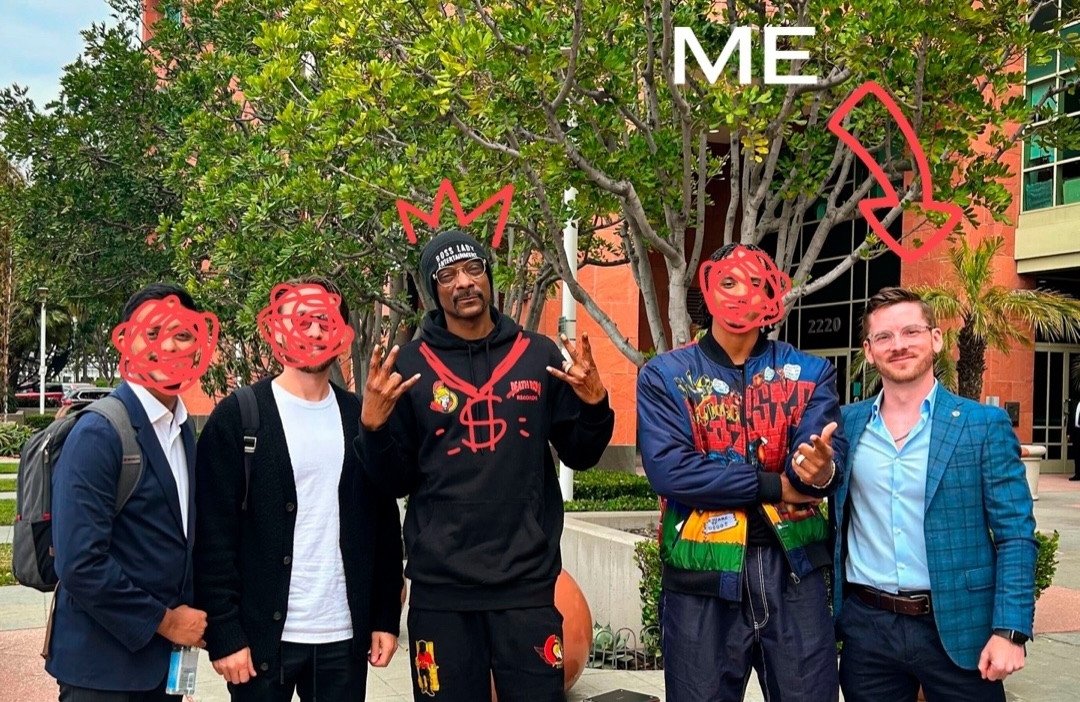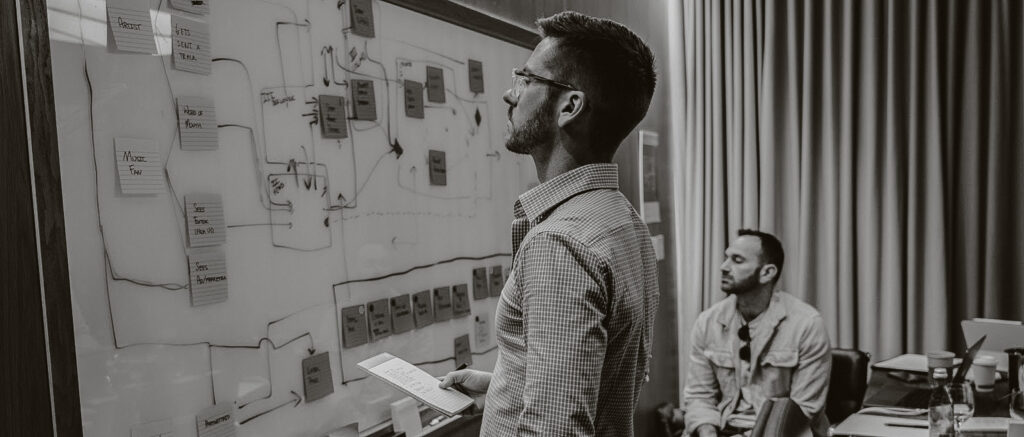

A few days after the start of the New Year, I was down in Argentina with my family visiting the rest of the Nerdstorm team.
After a week of hanging out with teammates in Buenos Aires and Cordoba, we rented a country home outside of Mendoza. We were planning on a few days of wine and “asado”—world-famous Argentine barbecue—before returning home to the US.
One evening, as the team was out collecting a metric ton of red meat for that night’s grilling session, I received a text in a WhatsApp group populated with a handful of agency owners.
“Got a hot lead. Snoop is looking to build something new. He needs a dev shop.”
My first reaction was a string of excuses.
We had no chance at landing this project. Nerdstorm was barely a year old at this point. We were just 20 nerds—a ragtag group of international designers and developers.
We weren’t the kind of company that works with someone like Snoop.
But something compelled me forward. Maybe it was the challenge. Maybe it was blind arrogance. But part of me felt like we could land this deal.
I knew the competition would be stiff. I knew we’d be up against companies 5-10X the size of us—agencies like Rootstrap and TheoremOne. But I also knew that gave us an advantage.
Bigger companies would have a process for handling leads like this.
A safe, stale, slow process. Corporate. Boring. Lame.
Three things Snoop isn’t.
We didn’t have a set process. We approached every lead like it was unique. That meant tailoring our pitch—customizing our offer—specifically for the prospect.
So at 8PM—about an hour before the team was set to start our late night “asado” session—I sat down and whipped up our pitch.
The next morning I awoke to a freshly minted deck, hot off the presses from our design team. And then I shot it off to Snoop’s representative.
I figured that was it. A valiant effort, a fun little challenge, nothing more. I didn’t expect anything to come from it.
So imagine my surprise two weeks later, sitting at a conference in San Diego, CA, when I receive a text from Snoop’s rep:
“Yo, Snoop’s team liked your proposal. Can you talk?”
I walked out of the conference hall mid-presentation and called him back. Snoop’s team loved the pitch, they wanted to see more. No problem, I said.
And then came what I figured was the kiss of death:
“It’s down to just you guys and Theorem.”
TheoremOne is one of those companies that’s so big, such an industry titan, you don’t even consider them a competitor. At the time, it felt like your local food truck putting in a bid opposite McDonald’s.
TheoremOne had sold to S4 Capital just the year before for an undisclosed, 9-figure sum. They had more offices than we had employees. And they charged 4-5X what we did per designer and developer.
Now normally that would be to our advantage. But someone like Snoop doesn’t care about relative cost. He doesn’t want the “affordable” provider. He wants the Cadillac. The gold chain.
Snoop wants bling. And TheoremOne knew how to bring the bling.
But it didn’t matter. We were moving forward. There wasn’t time to quit now just because we were up against Goliath.
So we prepared a larger pitch. Again, we approached this from zero, trying to find a story that only Snoop would understand.
On Friday, we talked to Snoop’s team. They loved the vision, but they were worried about our size. Could we handle a project like this? Were we capable of delivering?
After a half hour of Q&A, they put me on hold. Surely *this* was the end of the line.
But when they came back, another voice was on the line with them.
Snoop wasted no time.
He immediately jumped into his vision. This wasn’t just the music platform of the future, it was the *media* platform of the future. A digital home for everything Snoop—a single roof under which he could bring together all of his creative endeavors.
As quickly as he’d started, he cut off. And then he asked me what I thought.
It was a huge vision. Massive. Almost impossible to achieve in a year, much less a few short months.
But most importantly, I didn’t think it would work.
Products follow a natural trend as they move through a population. First developed in the 1930s by Everett Rodgers, the Technology Adoption curve describes the kinds of people a product *must* attract at each phase of its growth in order to be successful with the larger population.
Snoop’s vision targeted those in the latter half of the curve. It wasn’t going to work—not without a massive marketing budget artificially sustaining it through the first half of the curve.
Part of me wanted to play it safe, to just agree with him and go with the flow. But I was proud of the narrative we’d constructed. I knew this was my one shot to get it in front of Snoop.
So I dived into our pitch.
I told Snoop about I my first visit to Los Angeles as an adult.
I hit the Walk of Fame. I went to a comedy rap show in Hollywood. I partied at a Chinese-run after-hours speakeasy.
You know, LA shit.
But on my last day, I went down to Venice Beach. Down to The Boardwalk. Girls in bikinis on rollerblades. Juiced-out bros with veins popping out of their heads.
And young hip hop artists. Hustling.
These guys would hang out on The Boardwalk, chatting amongst themselves until someone came by. When someone passed, they would swoop down on them, pushing their mixtapes. They were aggressive, practically placing the headphones on your head to get you to listen.
If they could get you to stop, you were finished. They’d push and prod until you exchanged $5 for a few of their tracks burned to a CD-R.
And then they’d go back to hanging with their friends.
The Boardwalk was distilled hip-hop culture.
Young artists, hustling for listens. Not waiting to get discovered but fighting for the right to produce art.
They weren’t out there alone. They supported one another. They competed, sure. But they also collaborated.
This phenomenon isn’t exclusive to Venice. I’ve seen it repeated outside Central Park in New York and on La Rambla in Barcelona.
Everywhere you go, hip hop culture is hustle.
Its competition. Collaboration.
Hip hop culture is The Boardwalk.
Yep, I’d done it this time. Time to pack it up.
But then, Snoop said something that I can’t imagine anyone will ever say to me again:
“Motha%$@a! Now you’re speaking my language!”
I laughed. How else could you respond to something like that? Part of me couldn’t believe it worked—but another knew that this was the only strategy that was ever going to work.
Snoop didn’t want a safe corporate pitch. He wanted someone that understood his true vision. Someone that could speak his language.
After asking if we shared a father—I told him I didn’t believe so but I’d send him my 23andMe results—Snoop dropped off the call and I wrapped up with the rest of his team.

If you want to see how that went, drop your email here and we’ll send you the rest of the story.
We’ll show you how we squeezed Snoop’s vision out of his brain and into an actionable roadmap for design & development, complete with a clickable prototype, complete with accurate timelines and estimates.
We’ll walk you through our step-by-step process for taking those timelines and building them into a tangible Go-to-Market strategy, artfully explained in a Pitch Deck we used to secure a meeting with the executive team at one of the world’s largest record companies—a pitch that our founder, James, personally ran.
Most importantly?
We’ll show you how we can do the same thing for you: how we can transform your vision into a real working product, ready to take to customers and investors, built for market success.
Share your email and we’ll send you the rest of the story today.